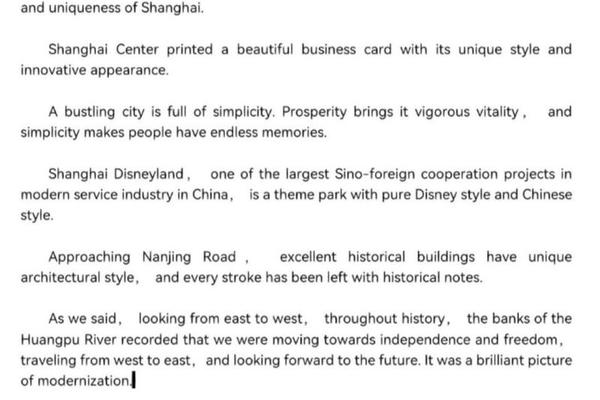The rise of Shanghai as an immigrant city has been a pivotal factor in its transformation into a global metropolis. Here is an overview of its development in English, supported by historical and contemporary contexts from multiple sources:
1. Historical Foundation: From Regional Port to Global Hub
Shanghai's emergence as an immigrant city began after its opening as a treaty port in 1843. By 1950, only 15% of its population was locally born, with the remaining 85% comprising migrants from provinces like Jiangsu, Zhejiang, Anhui, and Guangdong . This influx of domestic migrants fueled its rapid growth into China's economic and financial center, with its population surging from under 100,000 in 1843 to 5.5 million by 1949 .
Key drivers included:
Economic Opportunities: Migrants contributed to industries like trade, manufacturing, and banking.
Cultural Hybridity: A blend of regional Chinese cultures and later international influences created a unique urban identity.
2. International Migration and the "New Shanghailanders"

In the modern era, Shanghai has attracted global talent. By 2019, a quarter of China’s international migrants resided in Shanghai, drawn by its cosmopolitan environment and economic dynamism . The city’s master plan aims to further increase this demographic by 2035. Notably:

Skilled Western Migrants: Affluent professionals and academics have settled in Shanghai, contributing to sectors like finance, education, and technology. Their presence reflects Shanghai’s status as a "global city," though permanent residency remains restrictive .
Post-1990s Reforms: The development of Pudong in the 1990s spurred a new wave of domestic and international migrants, termed "New Shanghailanders" .
3. Policy-Driven Immigration and Economic Impact
Shanghai’s government has actively promoted immigration to sustain growth. Recent measures include:
Talent Attraction Programs: Policies targeting high-skilled professionals, such as simplified residency permits and tax incentives .
Investment Immigration: Events like the 2025 Shanghai International Property & Investment Immigration Expo highlight the city’s role as a hub for global capital and migration services .
Educational and Cultural Exchange: Institutions like Fudan University and NYU Shanghai attract international students and faculty, fostering innovation .
4. Cultural and Social Dynamics
Immigration has shaped Shanghai’s identity:
Linguistic Diversity: Shanghainese dialect integrates elements from Jiangsu, Zhejiang, and Mandarin.
Global-Local Fusion: Neighborhoods like the French Concession and Jing’an blend historical architecture with modern cosmopolitanism.
Challenges: Tensions between locals and migrants occasionally arise, particularly regarding resource allocation and cultural preservation .
5. Academic Perspectives
Scholars emphasize immigration’s role in Shanghai’s rise:
Economic Catalyst: Migrants provided labor and entrepreneurship, enabling industrialization and urbanization .
Demographic Resilience: As noted by historian Ge Jianxiong, migration enhanced the Han ethnic group’s adaptability and innovation, a pattern mirrored in Shanghai’s development .
Global City Model: Academic works like International Migrants in China’s Global City: The New Shanghailanders analyze how skilled migrants navigate Shanghai’s opportunities and constraints .
Key English Terminology
Immigrant City: Termed "immigrant city" or "city of immigrants" in academic discourse .
New Shanghailanders: Refers to both historical colonial-era expatriates and modern skilled migrants .
Mechanisms of Rise: Phrases like "demographic engine," "cultural hybridity," and "policy-driven globalization" encapsulate Shanghai’s trajectory.
For further reading, refer to sources such as Immigration: The Rise of Shanghai as a City (2013) and contemporary policy documents from the Shanghai Municipal Government .





